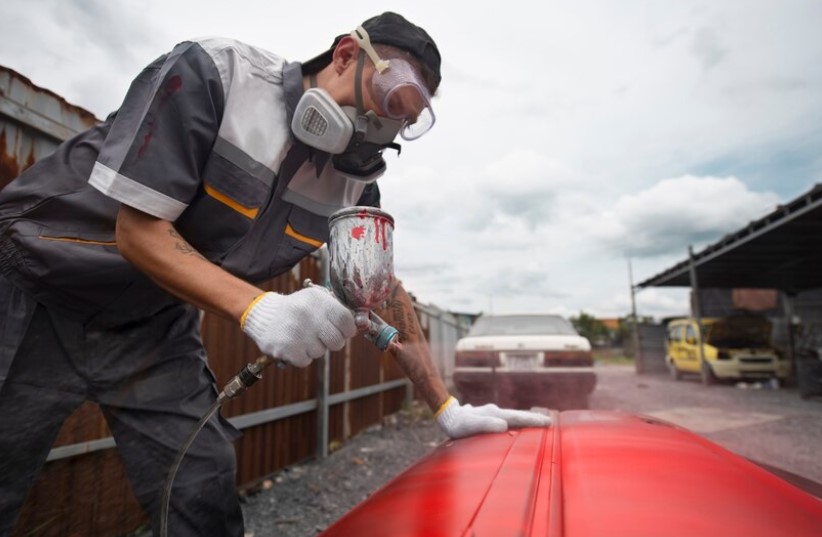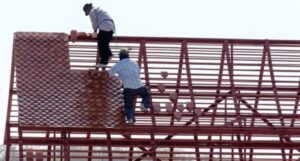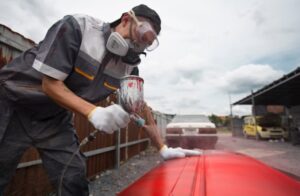Emergencies happen when you least expect them, and your commercial roof is no exception. Whether it’s a storm, fire, or sudden structural failure, an emergency roof repair can’t be ignored. The roof is a critical part of any building, especially commercial properties, where downtime can lead to significant financial losses, safety risks, and potential damage to inventory or equipment.
This blog explores practical solutions to handle emergency roof repairs for commercial properties, offering clear steps on how to manage these situations, the benefits of professional help, and the long-term actions that can minimize the chances of needing such repairs in the future.
What Triggers the Need for Emergency Roof Repairs?
Several factors can lead to an urgent need for roof repairs on commercial properties. Some of the most common include:
- Severe Weather: High winds, hail, and heavy rain can inflict serious damage on roofs, especially if they’re older or already compromised. Storms can tear off roofing materials, create leaks, or collapse portions of the roof.
- Fallen Debris: Trees or branches falling during a storm or from external accidents can puncture or crush roofing systems. This creates immediate risks of leaks or structural failure.
- Fire Damage: Fires can weaken the structural integrity of a roof. While firefighters might extinguish the flames, the damage left behind often requires immediate repair to prevent further collapse or water infiltration from firefighting efforts.
- Improper Installation: Subpar installation can lead to a range of problems, from water pooling to roof leaks. Poor-quality roofing materials or workmanship might also result in premature wear and tear.
- Age of the Roof: As roofs age, materials weaken and become more susceptible to damage. Even minor issues can turn into emergencies when the roof is past its prime.
- Accidental Damage: Construction or mechanical work on the building, such as HVAC installations, can sometimes lead to accidental roof damage, which might need urgent attention to avoid further issues.
Immediate Steps to Take When a Roofing Emergency Occurs
When a commercial roofing emergency strikes, immediate action can prevent further damage to the building and reduce downtime. Here’s what you should do when faced with an emergency roofing issue:
1. Prioritize Safety
Safety comes first in any emergency. If the damage is severe, such as after a storm or fire, evacuate the building and ensure that no one is in harm’s way. Structural damage can lead to collapse, and water intrusion can cause electrical hazards. Evacuating personnel and halting operations until the building is secure is crucial.
2. Assess the Damage
After ensuring everyone’s safety, perform a quick assessment of the damage if it’s safe to do so. This initial inspection will help you communicate the severity of the situation to a professional roofing contractor. You may notice visible damage, like missing sections of the roof, or more subtle issues, such as water stains indicating leaks.
3. Call a Professional Roofing Contractor
While it’s tempting to try and address the damage yourself, especially if it’s a minor issue, calling a professional roofing contractor is essential. Roofers have the equipment, skills, and experience to handle commercial roof repairs safely and efficiently.
Professionals can provide an emergency patch or temporary fix to protect the interior of your property from further damage while they work on a permanent solution. This might involve tarping the roof, replacing critical sections, or reinforcing the structure.
4. Document the Damage
Take pictures and videos of the roof damage as part of your insurance claim process. Proper documentation helps prove the extent of the damage and can expedite your claim for repairs. Keep a record of all communications with your roofing contractor and insurance company, as well as any invoices related to emergency services.
5. Mitigate Further Damage
While waiting for a professional repair, take steps to prevent additional damage to the interior of the building. This could involve placing buckets under leaks, moving valuable equipment or inventory, and covering vulnerable areas with tarps or plastic sheeting. The goal is to minimize the impact on your operations while waiting for a more permanent repair solution.
Types of Emergency Roof Repair Solutions for Commercial Buildings
The solution to an emergency roof repair depends on the extent of the damage and the type of commercial roofing system in place. Different roofs, whether flat, sloped, or made from various materials like metal or asphalt, may require specific approaches. Here are some common emergency repair solutions:
1. Roof Tarping
One of the quickest ways to stop water infiltration and prevent further damage is by using tarps to cover exposed or damaged sections of the roof. Tarping provides a temporary solution until professional repairs can be carried out. It helps protect the interior of the building from rain or debris.
2. Patch Repairs
In some cases, the damage may be localized to a specific area of the roof. Patching the affected area can quickly restore the roof’s ability to keep water out. This is especially useful for flat roofs where punctures or cracks are common after debris impacts or storm damage. Roofing membranes can be repaired by sealing or replacing damaged sections.
3. Shingle or Tile Replacement
If a sloped roof with shingles or tiles has suffered from wind or hail damage, replacing the missing or broken materials is a straightforward repair. This helps restore the roof’s integrity while maintaining its appearance. Keep in mind that proper matching of materials is essential to ensure uniformity and durability.
4. Water Removal
Water pooling on flat roofs or entering through leaks is a major issue that must be addressed quickly. Professionals will remove standing water, assess for water damage, and repair the roof membrane or drainage system. This prevents additional damage from moisture, which could lead to mold, mildew, and structural weakening.
5. Structural Reinforcement
For severe cases where the roof’s structure has been compromised, emergency reinforcement might be necessary. This involves shoring up the roof to prevent collapse and protect the building’s interior. It’s a short-term fix, giving contractors time to plan a more comprehensive repair or replacement.
Why You Shouldn’t Delay Emergency Roof Repairs
Ignoring or delaying emergency roof repairs can lead to serious consequences. Here are some reasons why immediate action is vital:
1. Increased Damage
The longer you wait to address roof damage, the worse it can become. Water infiltration can lead to mold growth, wood rot, and compromised insulation. Over time, minor damage can weaken the entire roof system, leading to much costlier repairs or even full roof replacement.
2. Safety Concerns
A damaged roof can pose significant safety risks. Structural issues may cause sections of the roof to collapse, putting employees, customers, and anyone else inside the building at risk. Even leaks, if they reach electrical systems, can create hazardous conditions that could lead to fires or electrocution.
3. Operational Downtime
If your commercial property houses critical operations, downtime can be expensive. Leaks or other damage may require shutting down parts of the building or halting work entirely. Immediate repairs minimize disruptions and help ensure that your business continues to function.
4. Insurance Claims
Insurance companies often require that property owners take prompt action to mitigate damage. Failing to address a roofing emergency quickly can result in the denial of claims, leaving you to cover repair costs out of pocket. Documenting your actions and calling a professional right away improves your chances of receiving full compensation for the damage.
Preventing Future Emergencies with Regular Maintenance
While emergencies are sometimes unavoidable, proactive roof maintenance can significantly reduce the chances of facing unexpected damage. Implementing a regular maintenance plan includes:
- Scheduled Inspections: Inspecting your commercial roof twice a year helps identify potential problems early, such as worn areas, cracks, or loose materials.
- Cleaning: Keeping drains, gutters, and roof surfaces free of debris prevents water buildup, which can lead to leaks and structural damage.
- Minor Repairs: Fixing small issues as they arise keeps your roof in top condition and helps avoid major repairs down the road.
Long-Term Solutions for Emergency Roof Damage
After addressing the immediate concerns, it’s essential to think about long-term solutions. Depending on the extent of the damage, this could involve investing in a complete roof replacement, upgrading materials to better withstand the local climate, or enhancing the roof’s drainage system. Working with a reliable roofing contractor will help you identify the best options for ensuring your commercial roof’s durability and longevity.
Emergency roof repairs are never convenient, but by acting quickly and using the right solutions, you can protect your commercial property from further damage and keep operations running smoothly.











